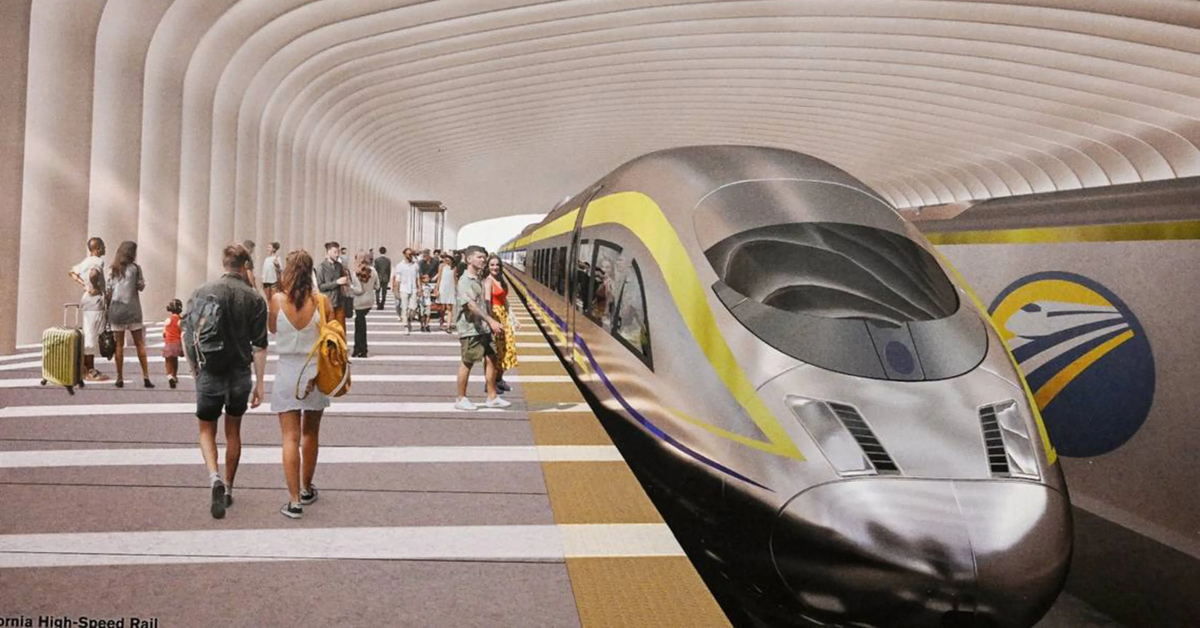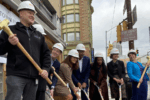California – Despite growing skepticism about the completion of California’s ambitious high-speed rail project, a majority of voters remain committed to funding the rail line that promises to connect the Bay Area to Los Angeles. An exclusive POLITICO-Citrin Center-Possibility Lab poll reveals that 62 percent of voters still support the state backing the project, even after recent federal funding cuts and ongoing construction delays.
The poll also uncovered sharp partisan divides in voter sentiment, emphasizing the complex political landscape surrounding the project. While Californians doubt the rail’s timely completion, their continued support speaks volumes about the project’s symbolic and practical significance in state politics.
Understanding the Partisan Divide and Voter Doubts
The poll surveyed over 1,400 registered voters and highlighted a pronounced split along party lines:
- Only 21 percent of Democrats believe it’s time to abandon the rail project, compared to 45 percent of independents and 62 percent of Republicans.
- A mere 27 percent of Democrats think the project will actually be completed, nearly matching the 23 percent of Republicans who share the same optimism.
This paradox illustrates a complex voter mindset—supporting the project despite widespread doubt about its eventual success. Voters acknowledge the challenges, yet the rail remains an emblem of California’s ambition.
“There definitely is this sense that the state can’t do big things,” said Andrew Acosta, a veteran Democratic campaign consultant in California. “Californians would like to see it happen, but show me the last project that came in on time or under budget.”
Financial concerns weigh heavily as 38 percent of Democratic supporters declared their backing is conditional on the project maintaining its current budget.
The Impact of Federal Funding Cuts and Political Dynamics
Last month, the project suffered a blow when the Trump administration withdrew $4 billion in federal grants, citing cost overruns and delays. The defunding was accompanied by scathing remarks from former President Donald Trump on his social media platform:
“This project was Severely Overpriced, Overregulated, and NEVER DELIVERED. Not a SINGLE penny in Federal Dollars will go towards this Newscum SCAM ever again.”
The Federal Railroad Administration’s decision followed similar criticism from Transportation Secretary Sean Duffy and Republican lawmakers, intensifying the political pressure surrounding the rail project.
Jack Citrin, a political science professor at UC Berkeley involved with the poll, linked the partisan split to broader national trends, noting,
“Any of these questions that smell of Trump, the Democrats are going to be pushed in the opposite direction.”
This partisan reaction helps explain why Democratic voters remain largely supportive of the rail, despite skepticism about federal involvement and project viability.
State-Level Commitment and Future Funding Prospects
Governor Gavin Newsom and rail backers, including influential labor unions, have responded by proposing a guaranteed $1 billion annual funding commitment from the state’s cap-and-trade program. This move aims to sustain momentum as lawmakers negotiate revenue allocations ahead of the legislative session’s end.
- The state’s funding proposal signals a willingness to press forward even in the absence of federal support.
- Democratic voter backing reinforces the political capital behind these funding efforts.
Still, lawmakers face tough choices about a project:
- Originally slated for completion by 2020, with initial service expected between Bakersfield and Merced by 2033.
- Now projected to cost up to $128 billion, nearly four times the initial $33 billion estimate.
Despite these challenges, Citrin points to enduring optimism among Democrats:
“I think a lot of this support shows that hope springs eternal.”
What Lies Ahead for California’s High-Speed Rail?
California’s high-speed rail project remains a complex story of ambition, political will, and pragmatic skepticism. Voters’ support—especially among Democrats—offers a foundation for continued investment, but officials face mounting pressure to demonstrate progress and curb costs.
As the state moves closer to legislative decisions on funding, and with federal aid unlikely in the near term, the future of the rail hangs in the balance.







